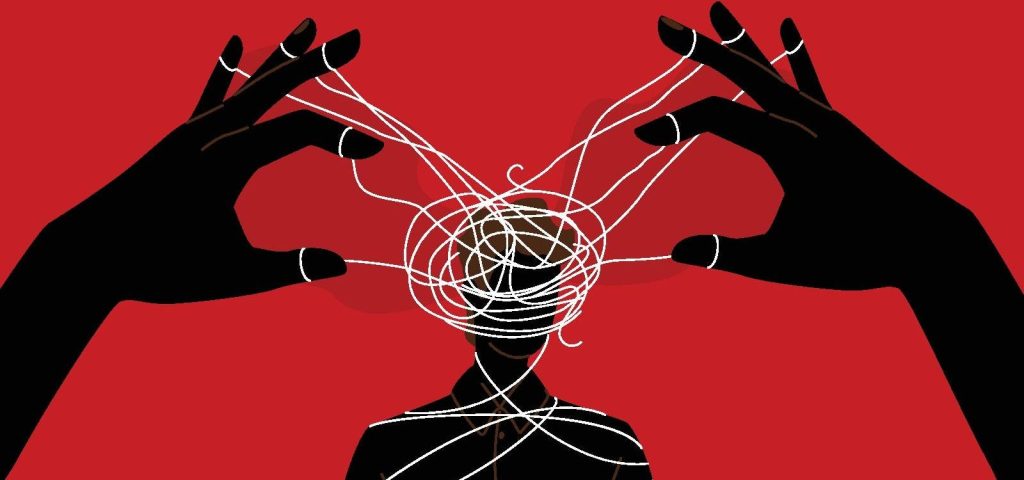Have you ever found yourself in a situation where you muster the courage to voice your feelings, only to end up feeling guilty and invalidated? It’s a scenario many of us have experienced. You try to express your hurt or discontent, but somehow the conversation turns on its head, and suddenly, you’re the one in the wrong.
This phenomenon can leave you feeling perplexed and drained, wondering if your emotions are valid at all. Unfortunately, this pattern of emotional manipulation is not uncommon, and it often stems from a calculated strategy.
What Is The ‘DARVO’ Strategy?
According to research from the Journal of Aggression, Maltreatment and Trauma, manipulators will often strategically employ a three-part methodology to stifle their victims’ voices and evade accountability.
This sequence, succinctly encapsulated by the acronym DARVO, serves as a blueprint for manipulative tactics aimed at shifting blame and preserving the perpetrator’s power. Through DARVO, perpetrators not only absolve themselves of responsibility, but also undermine the credibility and agency of their victims—perpetuating a cycle of abuse and manipulation:
- Deny. By engaging in a calculated act of denial, the perpetrator refuses to acknowledge their actions or the consequences thereof. They may adamantly negate any responsibility for their behavior, often employing tactics of minimization or outright dismissal. By denying the validity of the victim’s claims or the impact of their actions, the perpetrator effectively undermines the victim’s experiences and gaslights them into questioning their own reality.
- Attack. Following the denial stage, the perpetrator will attempt to assault the victim’s character and credibility. This attack can take various forms—from subtle undermining remarks to overt accusations and blame-shifting. By casting doubt on the victim’s integrity, motivations or mental state, the perpetrator seeks to discredit their claims and deflect attention away from their own misconduct. Through targeted attacks, the perpetrator further erodes the victim’s confidence and reinforces their sense of powerlessness.
- Reverse Victim and Offender. In the final stage, the perpetrator skillfully manipulates the narrative to cast themselves as the victim and the actual victim as the offender. This tactic involves a strategic inversion of roles, where the perpetrator portrays themselves as unfairly treated or harmed, while painting the victim as the instigator or aggressor. Through this inversion of reality, the perpetrator not only absolves themselves of guilt but also further victimizes their target, leaving them feeling isolated and discredited.
To envision this insidious process, imagine Alex and Sam. Sam feels hurt by Alex, and wants to express this to him. Denying any responsibility for his actions, Alex repeatedly belittles Sam’s emotions and dismisses her concerns with phrases like, “You’re just too sensitive” or “You’re overreacting.” Even when confronted about his hurtful behavior, Alex adamantly denies any wrongdoing, claiming ignorance or accusing Sam of fabricating issues.
Moreover, when Sam attempts to assert herself, Alex swiftly shifts blame, attacking Sam’s character or motives instead. When Sam expresses she’s even more hurt by how Alex is reacting, she’s met with attacking responses like, “You always try to blame me for everything” or “Why are you so insecure?”
Although Alex was undeniably the instigator in this situation, he somehow shifts the narrative to portray himself as the victim. With a mix of deflection and emotional manipulation, Alex might say, “I can’t believe you’re being so mean to me. You always put words in my mouth and make me feel like a bad person.” This not only deflects attention from his own hurtful behavior but also places the blame squarely on Sam, leaving her feeling unjustly accused and guilty.
Standing Your Ground Begins with Recognizing DARVO
Frequent encounters with this method of invalidation can lead individuals to doubt the legitimacy of their own emotions. The fear of inadvertently upsetting or offending the individual responsible for the hurt may evoke a crippling reluctance to voice concerns at all. Yet, remaining silent in such situations inadvertently plays into the hands of manipulators—leaving victims in a catch-22.
However, further research from the Journal of Aggression, Maltreatment and Trauma highlights how knowledge emerges as the ultimate source of power in navigating the DARVO strategy. According to the study, individuals with prior knowledge of DARVO are better able to discern when perpetrators are being manipulative. However, without the knowledge of DARVO, individuals are more likely to believe the manipulative tactics of the perpetrator, and thus view the victim as blameworthy.
To arm yourself with this knowledge, consider these signs to look out for the next time you attempt to express your emotions to an aggressor, and be confident in your ability to counter them:
- Signs of denial. Be on the lookout for an aggressor’s attempt to deny responsibility for their actions, to minimize your feelings or to gaslight you. To counter this, present them with concrete evidence of their wrongdoing to deflect their attempts at distorting your reality.
- Signs of attack. Look out for deflection tactics and attempts at character assassination. In the face of such insults or attacks, do your best to maintain composure, make it clear that you will not tolerate them discrediting your feelings, and redirect the conversation back to the issue at hand.
- Signs of reverse victim offender. Beware of the aggressor’s attempts to play the victim and blame-shift. If they do, remember to trust your own perceptions, and refuse to engage with any behaviors that undermine your sense of truth.
It’s understandable to have apprehensions about airing grievances, especially when past attempts have been met with disdain. Yet, if these revelations about the DARVO strategy resonate with your own experiences, know that you are already better equipped than before. Armed with this newfound knowledge, you possess the critical tool to identify and counteract these patterns of behavior.
Are patterns of manipulation present in your relationship? Take the evidence-based Relationship Satisfaction Scale to learn more.
Read the full article here






